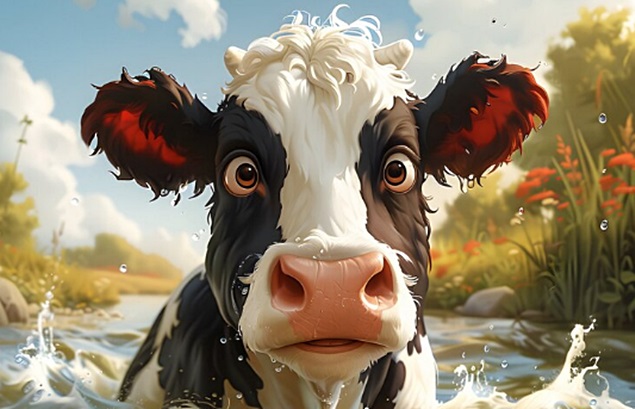
The Costly Financial Consequences of H5N1 Outbreaks in U.S. Dairy Cattle Production
The costly financial consequences of H5N1 outbreaks in U.S. dairy production have been revealed in new research, as reported by DairyGlobal.
Half a Million Dollars in Two Months
Researchers at Cornell University observed losses of approximately 900 kg of milk per cow over a two-month period. They also estimated financial losses of more than half a million dollars for the entire herd.
The study, published in Nature Portfolio (see "Sources" below), investigated the effects of a highly pathogenic avian influenza (HPAI H5N1) outbreak on a dairy herd of approximately 3,900 lactating cows in Ohio, monitored over a 67-day period (March 19 – April 11, 2024).
The disease infected 20% of the herd (777 animals), with nearly 600 cows (approximately 76%) testing positive without showing symptoms.
Symptomatic cows were more likely to die and were 3.6 times more likely to be removed from the milking herd.
Using individual animal data from the farm’s management system, the authors estimated the total financial loss for the farm at $737,500.
Decline in Feed Intake and Milk Production
The first clinical case on the farm was recorded roughly two weeks (13 days) after a seemingly healthy cow imported from Texas was introduced to the herd.
New cases were recorded daily for three weeks, peaking 10 days after the initial infection.
According to the authors, the two major signs that an animal may be carrying the potentially deadly virus were decreased feed intake and lower milk yield.
“Our analysis shows that at the herd level, reduced rumination time and daily milk production began within seven days of identifying the first clinically affected animal. However, when examining adjusted individual animal means…, we observed that both indicators began to decline approximately five days before clinical diagnosis,” they stated.
This highlights the importance of farm monitoring systems to detect early warning signs of the virus.
Higher Risk for Multiparous Cows
The study also found that multiparous cows were more likely to develop clinical illness compared to first-lactation or dry cows.
But the most striking findings related to the magnitude and duration of milk losses in affected cows.
Two weeks after infection, milk production fell by almost three-quarters (73%, or around 35 kg/day down to 10 kg/day).
“The milk production drop observed here is much steeper than in other common bacterial clinical mastitis cases, where losses of up to 18 kg have been reported,” the authors wrote.
Infected dairy cows did not return to pre-infection production levels within the 60 days post-diagnosis, resulting in a total milk loss of 901.2 kg per cow during that time.
“This persistent milk loss might be overlooked when evaluating only bulk tank levels at the herd level, where underperforming cows are quickly replaced and the total volume recovers,” they added.
“In our investigation, we were able to prospectively track individual cows using daily milk production records, allowing us to estimate cow-level losses with greater granularity. In turn, this allowed for more accurate economic loss estimates when a cow experiences an H5N1 infection.”
“The True Cost May Be Even Higher”
While the estimated per-case cost was approximately $950 (or $737,500 for the herd), the authors stated that the true cost is likely even greater when considering ongoing reproductive disruptions, milking time interruptions, labor issues, supportive care, biosecurity changes, and other unmeasured factors.
In conclusion, the researchers stated: “While our study focused on a single herd, it is one that reflects a typical free-stall, total mixed ration-fed operation. Therefore, these results demonstrate the serious impact of an H5N1 influenza A virus outbreak on affected farms.”
“It’s important to note that differences in farm style, geographic region, or management practices could lead to greater or lesser economic losses for other herds.”
“Nevertheless, our findings highlight the significant impact of the H5N1 influenza A virus on the U.S. dairy industry as the virus continues to spread and cause financial losses for dairy producers—posing an increased threat to both animal and public health.”





